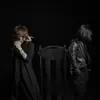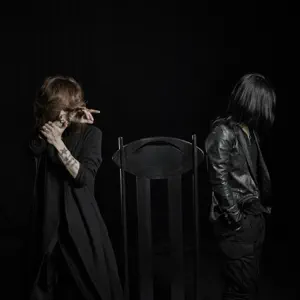


Acerca de Kuroyume
Top-level stars of the golden age of visual kei, Kuroyume ("Black Dream") are comparable with X-Japan and Luna Sea in terms of influence on the J-rock scene of the '90s and 2000s. Teetering on the verge of black metal in their early days, the band later learned to combine pop appeal with a healthy doze of radicalism in both sound and image, serving as a source of inspiration for artists like Merry and Dir en Grey whose vocalist, Kyo, used to be Kuroyume's roadie, an influence mirrored in his fashion and makeup style, drawn on the looks of its frontman Kiyoharu.nnKuroyume was founded in 1991, when Kiyoharu, ex-member of Sus4 and Garnet, joined up with his former Garnet bandmate Hitoki (bass). The lineup also featured guitarist Masaru, but he soon left, resurfacing in Oblivion Dust, with his position in Kuroyume taken by Shin. The group's first demo tapes date back to 1991, and in 1992 one of those, Ikiteta Chuuzetsuji, was reissued on a CD, showcasing the band's dark metal sound. Kuroyume shifted to rock on their second release, the album Nakigara Wo (1993), which still had a gothic vibe, but was more accessible, and provided the song "Shinainaru Death Mask" for the group's first promo video. Kuroyume also played live a lot, sharing the stage with such acts as L'Arc-en-Ciel and Silver Rose.nnThe indie days were over in 1994, when Kuroyume were signed by Toshiba EMI, the band's first record for the label being the single "For Dear" and the album Mayoeri Yuritachi (both 1994), followed by the EP Cruel (1994), which marked a move in the poppier direction. This didn't sit well with Shin, who left in 1995, concentrating on his other band, Vinyl, and although he had been that band's main songwriter, Kiyoharu and Hitoki decided to continue without him, working as a duo and writing the music themselves. Kuroyume capitalized on their new mainstream rock sound with successful albums Feminism (1995) and Fake Star (1996), the latter bringing them an MTV Video Music Award for the song "Pistol."After that, Kuroyume showed their spirit again, reinventing themselves as a punk rock band on Drug Treatment (1997), which became a million-seller. Another punk album, Corkscrew, followed in 1998, but it proved to be their last: in 1999 the band was suspended for an indefinite period. Hitoki's health issues were cited, but it seemed to be a pretext for creative differences, because both members launched their solo careers, Hitoki's most notable new band being Piranaheads, and Kiyoharu establishing SADS and then proceeding to work solo under his own name. He collaborated with Sugizo of Luna Sea and Kirito of Pierrot, and created his own label, on which he produced Merry. He even started his own clothing and accessory lines. In January 2009, Kuroyume got together for a one-off gig at the Budokan, which marked the official disbandment of the group.nn A short few years later, however, the duo got back together again, signing with massive J-Pop factory Avex in 2012 and releasing the peculiarly titled album Headache and Dub Reel Inch. The band's time away hadn't hurt their fanbase and the album was a big seller despite ambivalent reviews. They swiftly followed up with Kuro to Kage ("Darkness and Shadows") in early 2014, which was a better album with a more straightforward punk-metal feel. Kiyoharu carried on his solo career in parallel, releasing the album Under the Sun in 2012. ~ Alexey Eremenko
Discografía de Kuroyume
18 discos

Drug Treatment
2015

Reverb - Single
2014

Kurotokage
2014
Ver todos los discos
Canciones más vistas de
Kuroyume en Abril
Top Artistas
Nosotros
Notas
